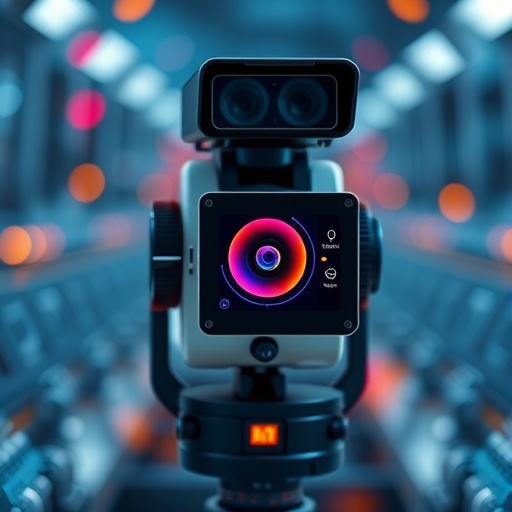The realm of artificial intelligence has seen an exponential growth in capabilities, particularly in the last decade, with a significant spotlight directed towards deep learning techniques. Among these advancements, object detection stands out as one of the most transformative applications, offering remarkable improvements in how machines recognize and interpret visual information. A recent study titled “Global impact and thematic evolution of object detection in the deep learning era,” authored by A.H. Roslin and N. Muhammad, sheds light on the profound implications and evolving trends of this technology.
Object detection, at its core, refers to the ability of algorithms to identify and localize multiple objects within images or videos. Traditionally, this task required extensive manual feature extraction and engineering by skilled practitioners, which limited its scalability and effectiveness. The advent of deep learning, particularly convolutional neural networks (CNNs), has revolutionized this field. By leveraging large datasets and an abundance of computational power, these methods can learn complex patterns directly from raw data, significantly enhancing both speed and accuracy in object detection tasks.
The implications of efficient object detection are far-reaching across various domains. In the realm of autonomous vehicles, for instance, the ability to swiftly and accurately distinguish between pedestrians, cyclists, other vehicles, and road signs is crucial for safety and operational efficiency. Today’s deep learning models are capable of processing live camera feeds in real-time, enabling vehicles to navigate complex urban environments without human intervention. This technology has not only opened new avenues for mobility but also necessitated discussions surrounding ethical considerations and regulatory frameworks.
Healthcare is another sector experiencing a transformation due to advancements in deep learning-based object detection. In medical imaging, for example, algorithms can be trained to identify tumors in radiographic images with a precision that rivals, and sometimes exceeds, human experts. This not only accelerates the diagnostic process but also improves patient outcomes by facilitating earlier intervention. The study conducted by Roslin and Muhammad underscores the burgeoning interest in applying these technologies in various healthcare applications, highlighting ongoing research focused on increasing the robustness and reliability of detection models.
The rise of object detection has also catalyzed growth in related fields such as robotics, surveillance, and augmented reality. Robots equipped with advanced vision systems can perform complex tasks in unstructured environments, from assembling parts in manufacturing units to aiding in disaster recovery efforts. Similarly, surveillance systems have become more intelligent, employing sophisticated algorithms to monitor and analyze activities in real-time, thereby enhancing security measures across urban landscapes.
Moreover, the researchers explored the thematic evolution of object detection over time. Initially, early methods focused on simple, handcrafted features combined with traditional machine learning techniques. However, as deep learning gained traction, the landscape shifted dramatically. The introduction of frameworks such as YOLO (You Only Look Once) and SSD (Single Shot MultiBox Detector) exemplifies this transition, enabling quick and efficient detection while maintaining high levels of accuracy. As new architectures emerge, the quest for improvement continues, with researchers experimenting with larger datasets and innovative learning techniques to push the boundaries of what is possible.
Public datasets have played a pivotal role in the advancement of object detection methodologies. Collections like COCO (Common Objects in Context) and PASCAL VOC have provided a wealth of annotated images, fostering a collaborative environment where researchers can benchmark their models and share findings. This accessibility has democratized the development of object detection technologies, allowing smaller institutions and independent researchers to contribute to the field as well.
As noted in the study, the global impact of object detection extends beyond technical capabilities. The commercial landscape has seen a surge in startups and established companies investing in this domain, recognizing its potential to disrupt traditional business models. Industries such as retail are exploring computer vision technologies for inventory management and customer experience enhancement, demonstrating a tangible link between machine intelligence and economic opportunity.
Despite the overwhelming advantages, challenges persist. Issues such as model bias, which can arise from unrepresentative training data, demand attention to maintain equality and fairness across applications. Intriguingly, the researchers highlight ongoing efforts to develop more inclusive datasets and strategies aimed at mitigating bias in AI systems, recognizing that equitable AI is essential for it to gain widespread acceptance.
The discourse surrounding object detection is further enriched by its intersection with social implications. For instance, the proliferation of surveillance applications raises concerns about privacy and civil liberties. As governments and organizations adopt these technologies, it is essential to ensure transparency and accountability, balancing security needs with respect for individual rights. The collective insights from Roslin and Muhammad’s research offer a holistic view of these complexities, calling for active engagement from stakeholders to navigate this multifaceted landscape.
In conclusion, the study by Roslin and Muhammad serves as a vital reminder of the global impact and thematic evolution of object detection in the era of deep learning. It highlights how algorithms have transcended their original purpose, becoming integral to various high-impact applications across multiple industries. The road ahead is filled with possibilities as research continues to advance, posing questions about the future relationship between humans and machines, and the ethical implications that come with it.
As we stand on the cusp of a technological revolution powered by deep learning and object detection, it is incumbent upon researchers, practitioners, and policymakers to collaborate closely. By doing so, we can shape a future where AI serves as a trusted ally, enhancing human capabilities while fostering a more equitable and inclusive society.
Subject of Research: The global impact and thematic evolution of object detection in deep learning.
Article Title: Global impact and thematic evolution of object detection in the deep learning era.
Article References:
Roslin, A.H., Muhammad, N. Global impact and thematic evolution of object detection in the deep learning era.
Discov Artif Intell 5, 262 (2025). https://doi.org/10.1007/s44163-025-00528-x
Image Credits: AI Generated
DOI: 10.1007/s44163-025-00528-x
Keywords: object detection, deep learning, artificial intelligence, healthcare, autonomous vehicles, computer vision, fairness in AI, bias in AI.




